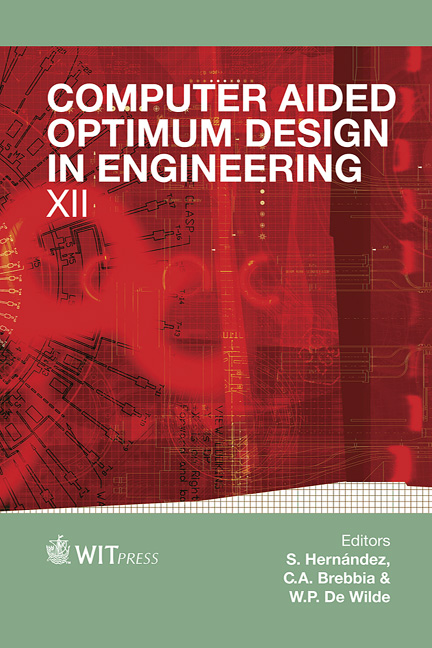Optimization Of Damping Unit
Price
Free (open access)
Transaction
Volume
125
Pages
9
Page Range
155 - 163
Published
2012
Size
1,063 kb
Paper DOI
10.2495/OP120141
Copyright
WIT Press
Author(s)
J. Kolář & K. Adámek
Abstract
This paper reports the numerical investigation and optimization of a damping unit where oil flow interacts with an elastic chocking plate. Chocking of flow from a by-pass valve is the basic principle of hydraulic shock absorbers. However, cavitation phenomenon caused by strong shocking occurs at high frequencies of an actuating movement and the original damping unit characteristic is being distorted. We used the computational fluid dynamic to minimize the distortion of characteristic as much as possible. To satisfy the high number of unsteady simulations, the involved fluid-structure interaction needs to be coupled in a different way than the routine is. The plate deformation is coupled with an average hydrodynamic loading pressure by a single aforecomputed third polynomial equation being predicted by FEM. Numerical simulations of flow by the use of FVM exploiting dynamic mesh in Fluent commercial code then provides a flow field pattern and loading pressure within the unit itself. A User Defined Function (UDF) enables the deformation of the domain boundaries in a coupled way. Finally, the time dependency of the plate position and its dynamic behaviour is obtained. Highly dynamic manners appeared and numerous techniques providing a better stability of computations had to be investigated and developed. The state where the most cavity bubbles are being induced is further applied to shape optimization at the steady state. The shape-based similarity optimization of by-pass geometry is then carried out to minimize the formation of cavitation bubbles. Keywords: damping unit, shape optimization, computational fluid dynamics, chocking plate, cavitation, user defined functions, shape based similarity. 1 Introduction The movement of a thin spring-steel plate induced by the impact of oil flow is an example of fluid-structure interaction. This interaction can be found in many engineering devices. The mentioned case is a typical one in the field of chocking
Keywords
damping unit, shape optimization, computational fluid dynamics, chocking plate, cavitation, user defined functions, shape based similarity.





